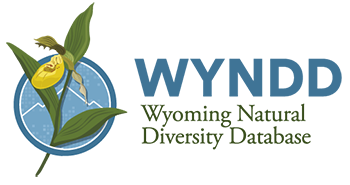A = Very Rare, which means at least one of the following apply:
- Fewer than 2,000 acres (i.e., about 3 sections of occupied habitat)
Fewer than 10 miles of stream length
Fewer than 1,000 individuals
Includes blowout penstemon, desert yellowhead, Hyattville milkvetch, red manzanita
B = Rare, which means at least one of the following apply:
- 2,000 - 10,000 acres (i.e., 3 - 15 sections of occupied habitat)
10 - 50 miles of stream length
1,000 - 3,000 individuals
Includes Absaroka beardtongue, Laramie columbine, Porter’s sagebrush, shoshonea
C = Uncommon, which means at least one of the following apply:
- 10,000 - 50,000 acres (i.e., 15 – 78 sections, or 0.5 – 2 townships)
50 - 250 miles of stream length
3,000 - 10,000 individuals
Includes Barr’s milkvetch, clustered lady’s-slipper, persistent-sepal yellowcress; species that may or may not be tracked depending on trends and threats
D = Common, which means at least one of the following apply
- over 50,000 acres (i.e., over 80 sections, or 2.2 townships of occupied habitat)
over 250 miles of stream length
over 10,000 individuals
Includes locally dominant or abundant species; not tracked
E = Abundant, which means at least one of the following apply:
- over 250,000 acres (i.e., over about 390 sections, or 10 townships of occupied habitat)
over 1,000 miles of stream length
over 50,000 individuals
Includes dominant species like Ponderosa pine, quaking aspen, Wyoming big sagebrush, and habitat-generalist species like yarrow

